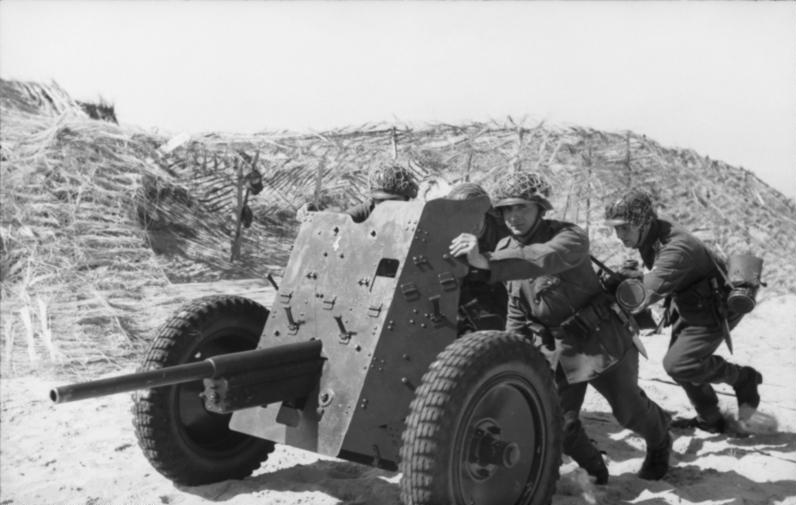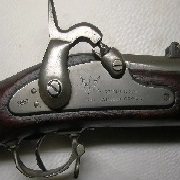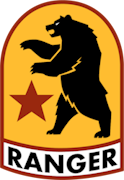|
Cessna posted:Make it taller, comrade. I legitimately thought this was a real photo with an artistic filter applied for a few seconds until I noticed the people. Really good job with this scene. Edit: How "real" could someone make a scene like this? Like if you applied the right filters and lighting and if you really aimed to fool someone that something was happening that it wasn't, how close could you get? On the scale on "Can it fool grandparents on facebook?"
|
|
|
|

|
| # ? Jun 9, 2024 10:05 |
|
Raenir Salazar posted:On the scale on "Can it fool grandparents on facebook?" Oh my, friend. You must be new to the Internet
|
|
|
|
Does anyone have details on the interior of a Tolland-class attack cargo ship? I have plans for something involving it. Would they have also done the “climb down the cargo nets” thing to board LCVPs?
|
|
|
|
|
bewbies posted:A few years ago I was visiting the OKC federal building museum of all places, and in said museum, they have a mock up of the kit I wore on my first trip to Iraq back in 2004. I admit it kind of floored me...in my head it wasn't THAT long ago (it actually was), but there my poo poo is, sitting in a museum just like those fancy pants Napolenic outfits, or Henry VIII's fat guy armor. Yep. I've seen four utility uniform changes in my life thus far. But as for realistic movies... we have had quite a few GW1 films already. Lone Survivor, Jarhead, The Messenger (holy gently caress what a depressing movie), Restrepo (this is more of a documentary though), American Sniper, Black Hawk Down, a few TV series... and on and on... If you are talking about films about WW2... We just had Dunkirk. We have Pegasus Bridge, Time of the Locusts, Silent Night, Hurricane, Hacksaw Ridge (ouch this one is loving brutal to anyone with a fuckign heart), Emmerich is working on a new Midway film (god help us) the 12th Man out of Norway looks good. 303 Squadron I will be watching rabidly. Brothers in Arms (761st Tank battalion covering the BotB) The Battle of Britain (being remade again, in England) Dambusters (you all know what this one is about already)
|
|
|
|
chitoryu12 posted:Does anyone have details on the interior of a Tolland-class attack cargo ship? I have plans for something involving it. Try here: http://www.usmm.org/c2ships.html
|
|
|
|
Even Donald Trump can fool grandparents on facebook
|
|
|
|
EvilMerlin posted:But as for realistic movies... we have had quite a few GW1 films already. Three Kings, Courage Under Fire.
|
|
|
|
It's actually changed a couple times since the old year-of-adoption system. In the 1930s the US Military decided to drop the year numbers and adopt a system of increasing model numbers by type: Edgar Allen Ho posted:It’s just a standardized naming system the US Army used to use. Thing MxAxEx. M=model, A=alteration, E=experimental. So M1 ends up all over the place but M4A3E8 is a rarer possible combo. A bit of a quirk of the system at the time is that while E stands for experimental, in functional practice it more commonly refers to post-manufacture alterations to a design - upgrades or modifications that don't change the base model specifications but still follow a standard. So you have things like the M4A3E8 and M4A4E9, where they took M4A3 variants and swapped out or upgraded various pieces of equipment. The T (test) designation was used for what we today tend to call experimental designs. The M4 medium tank was known as the T6 medium tank before it was formally adopted. The A designation was not used with T, only the E (so, T1E1 Pedersen rifle). T numbers iterated separately from M numbers, which can be confusing for people looking at things historically like us, but wasn't really a problem for military use. This system was modified over time. Initially any test article got its own numbering set - so there's both a T1 Pedersen and a T1 Garand. This was pretty quickly recognized as too confusing and subsequently test articles were iterated by type. Once the US got into WW2 and started rapidly adopting a lot of new equipment, they quickly came to the conclusion they'd made the categories too granular - in practice differentiating between the M3 Light and M3 Medium tanks was pretty clumsy and likely to cause misunderstanding. Then by sheer chance the US adopted several M4s all at the same time - medium tank, light tank, and gun motor carriage - which was just going to make things worse. So they skipped M4 for light tanks, and M4 and M5 for gun motor carriages, which is my we have the M5 Stuart and the M6 Fargo (which was a really crappy design). After this they started lumping things together more, hence why the Pershing is the M26 instead of the M2 Heavy Tank - it came after the consolidation of AFVs, and there were 22 tank destroyers, light tanks, medium tanks, and heavy tanks in between. It's worth noting there's a couple exceptions because they didn't backdate the change and it took a while to propagate changes, so a handful of designs came in under the old system late. Fortunately none of those are particularly common. This system persisted through the war, but the US Army still wasn't totally happy with it, especially with vehicles. They'd come to the conclusion it would be better for a vehicle to have its own M number, so you didn't have to clarify if you meant a truck or a tank or a APC or whatever. So in the mid-20th century they eventually stuck all vehicles into the same series and jumped it to M100, since none of the individual lines had reached that point. Again, this was not backdated, so older equipment kept whatever designation fit into the system in use when they were adopted. Around the same time the T designation was dropped in favor of XM (eXperimental Model), and the intention was that at least for firearms, the M and XM numbers would be in the same line, and adoption would just mean dropping the X part of the designation. The M16 started as the XM16, for example. To make things just a little more complicated, the US Navy designated arms by a different system - Mk X Mod X, for Mark and Modification, and Mod starts at 0 for the base design. US Special Operations Command has kept this standard for it's unique equipment. Sometimes designs have both a Mk number and an M number if they're adopted by both the Army and the Navy, but sometimes not. It's slightly more common for the designation of whoever got the design first to be used, but it's super inconsistent. The US Marines, in a rare case, decided not to do their own thing and just use the designation of the branch that first adopted the item. The US Air Force doesn't seem to really give a crap unless it's an aircraft, where the designations have been rationalized across all branches anyways. Of course sometimes the military decides to break its own rules when they decide it would be cooler to do so, which is why the M1 Abrams is the M1. There's also some things that seem like exceptions to whatever system was being used at the time, but aren't. The Johnson rifles were given the M1941 name by him, not the military as they were never formally adopted.
|
|
|
|
Ataxerxes posted:Also, how Wallenstein sick? What would he have died of, if not from a sudden attack of sanctified halberd? what historians know about : gout, chronic malaria, may have gotten typhus as a young man during his first campaign what historians guess about : chronic syphillis, possibly heart disease? he got very sick at the end of his first campaign when he was a young man but we don't know what he had because he said "the hungarian disease" (since he was fighting in hungary, you see) and that could have been either typhus or syphillis. my money's on typhus because someone's first attack of syphillis isn't that noticeable HEY GUNS fucked around with this message at 19:08 on Jan 16, 2019 |
|
|
|
Alchenar posted:There's a whole load of reasons why you want to be really specific about what you are describing, ranging from a) procurement people deal with dozens of projects at once and need to not confuse them, b) logistics people deal with thousands of items and in the US in particular saying "I want 200 of the model 1 thing" can result in a delivery of anything from a box of matchticks to an armoured division.
|
|
|
|
Phanatic posted:This is a lot of unsupported pop psychology and assumes a whole heaping pile of things not actually established to any degree of reliability.
|
|
|
|
Cessna posted:Three Kings, Courage Under Fire. Yep, those too. I liked Three Kings.
|
|
|
|
Is there a book somewhere that goes into detail across multiple countries that details their naming and numbering scheme? I feel like it was a few hours of googling to figure out the Chinese/PLA system; nothing is on wikipedia.
|
|
|
|
Comrade Gorbash posted:It's actually changed a couple times since the old year-of-adoption system. And lets not forget about the naming system the US Navy was working with in WW2. First letter: B: Bomber, F= Fighter, J= Utility, N= Trainer, O/OS= observation/observation&scout, P=patrol, TB= torpedo bomber and there are a few others Number = the build number of chassis, so if say Boeing makes and delivers 6 fighters, its supposed to be F1B to F6B The last letter is manufacturer and there are a shitload A: either Allied or Brewster depending on the Aircraft type B: boeing/Beech C: Curtiss/Cessna D: Douglas E: Piper F: Grumman/Fairchild G: Goodyear H: Howard J: North American M: GM/Martin N: Naval Aircraft Factory (want some fun, read up on this mess) O: lockheed's 2nd plant Q: Fairchild Engine Plant R: Ryan S: Stearman/Sikorsky U: Vought V: Vultree Y: Consolidated F4B: a loving 1920's biplane F4C: a gorgeous early 30's biplane that eventually became the P-26. F4D: a loving jet from the early 50's F4F: The Wildcat F4U: The Corsair F-4: The Phantom II Lets ot forget about Dash types which went from stolen from the Army (A) to Z... (administrative versions of transports). The Navy conventions were loving stupid. In the changes today: A: Attack aircraft (for air-to-surface mission) B: Bomber C: Transport E: Special electronic installation F: Fighter K: Tanker (dropped between 1977 and 1985) L: Laser-Equipped O: Observation P: Maritime patrol R: Reconnaissance S: Anti-submarine warfare T: Trainer U: Utility X: Special Research or A: Attack (i.e. air-to-surface) C: Transport D: Drone director E: Special electronic mission F: Fighter H: Search and rescue, MEDEVAC K: Tanker L: Equipped for cold weather operations M: Missile carrier (1962 – c.1972), Mine countermeasures (c.1973–1976), Multi-mission (1977 onwards) O: Observation P: Maritime patrol Q: Unmanned drone R: Reconnaissance S: Antisubmarine warfare T: Trainer U: Utility V: Staff transport W: Weather reconnaissance EvilMerlin fucked around with this message at 19:10 on Jan 16, 2019 |
|
|
|
EvilMerlin posted:And lets not forget about the naming system the US Navy was working with in WW2. Aircraft Designations during World War II Ever wondered why some national air forces have strange, seemingly random aircraft designations? The A6M Zero, F6F Hellcat, LaGG-3, C-47, the list goes on. Not all airforces worked the same way, which leads to all the different nomenclatures between them all. After having found a list or two, I was quite intrigued and tried to compile a list of all the different nations. My lists are by no means complete, so as to reduce the number of repeat or useless inclusions. I will however link to articles that go further into the lists, on wikipedia or elsewhere. United States Army Air Force (USAAF) A: Attack B: Medium and Heavy Bombers C: Transport F: Photo Reconnaissance L: Liaison O: Observation P: Pursuit R: Helicopter AG: Assault Glider AT: Advanced Trainer BT: Basic Trainer CG: Cargo Glider OA: Observation Amphibian PT: Primary Trainer TG: Training Glider UC: Light Transport United States Navy (USN) F: Fighter B: Bomber O: Observation P: Reconnaissance T: Torpedo Bomber N: Trainer J: General Purpose G: Single-engined Transport R: Multi-engined Transport H: Helicopter L: Glider But that's not all, designations usually included the manufacturer's code as well. American Manufacturers A: Brewster B: Beech and Boeing C: Curtiss and Cessna D: Douglas and McDonnell E: Piper F: Grumman and Fairchild G: Goodyear H: Consolidated-Vultee J: North American K: Fairchild and Bell M: Martin N: Naval Arsenal O: Lockheed P: Piper R: Ryan S: Sikorsky and Stearman T: Northrop U: Chance Vought The Army didn't include manufacturer codes, but the Navy did. This is why you see Navy planes like the F6F or PBJ-1, but Army aircraft like the P-51 or the B-17. Designations were also changed a lot throughout the years, and a full revamp was done after world war II which caused planes like the P-51 to be renamed the F-51 and the P-84 was changed to the F-84. The Russians also had a designations system that went from using mission type designations like the USAAF to strictly manufacturer codes. Soviet Designations I: Fighters BB: Short-Range Bombers DB: Long-Range Bombers PS: Transport TB: Heavy Bombers ARK: Arctic Zones KOR: Shipboard Catapult Reconnaissance MBR: Short-range Reconnaissance Seaplane MDR: Long-range Reconnaissance Seaplane U/UT: Trainer This is exemplified with the I-15/I-16, TB-3, DB-3 and so on. Soviet Design Office Codes An: Antonov Ar: Archangelski BI: Berezniak-Isaev Be: Beriev Il: Ilyushin La: Lavochkin LaGG: Lavochkin-Gorbunov-Gudkov Li: Lisunov MiG: Mikoyan-Gurevich Pe: Petlyakov Po: Polikarpov Su: Sukhoi Tu: Tupolev Yak: Yakovlev Yer: Yermolayev It's quite safe to say that, by the time World War II started the Russians gave up on the idea of using mission-type aircraft designations and have been using design office codes ever since. The Japanese also used special designations although only for their naval aircraft. All the IJA aircraft were named with a Ki prefix (Ki-10, Ki-27, Ki-61, Ki-100, etc.). Imperial Japanese Navy Aircraft Designations A: Carrier-borne Fighter B: Carrier-borne Bomber C: Carrier-borne Reconnsaissance D: Carrier-borne Dive Bomber E: Reconnaissance Seaplane F: Observation Seaplane G: Land-based Bomber H: Flying boat J: Land-based Fighter K: Trainer L: Transport M: Special Purpose Aircraft N: Seaplane Fighter P: Land-based Bomber Q: Anti-submarine Warfare Aircraft R: Land-based Reconnaissance S: Night Fighter Y: Glider Japanese Aircraft Manufacturer codes A: Aichi D: Showa G: Tokyo Gasu Denki H: Hiro K: Kawanishi M: Mitsubishi N: Nakajima P: Nippon Hikoki S: Sasebo W: Watanabe Y: Yokosuka With all that in mind, and especially true for the IJN and USN, an aircraft's designation would be the mission type followed by model number and then the manufacturer code. The A6M can thus be read as the Carrier-borne Fighter, model number 6 built by Mitsubishi. Just like how the F6F reads the Fighter model 6 made by Grumman (F-code). Model number usually followed the designer's previous submitted models, successful or not. The British system was different still and didn't strictly follow itself at all times. As such, it's best explained via this wikipedia article. The Italians never used a designation system that included mission types during World War 2, they simply used the manufacturer's code and a model number. Italian Aircraft Manufacturers SAI: Ambrosini BA: Breda CANT: Trieste Shipbuilding and Naval Aeronautics CA: Caproni CR/G: Fiat RO: Aeronautical and Mechanical Industry Meridionali M/MC: Macchi Aeronautica FN: Fratelli Nardi P: Piaggio Re: Reggiane SM: Savoia-Marchetti The same can be said for the Germans. Luftwaffe Aircraft Designation System Ar: Arado Ba: Bachem Bf: Bayerische Flugzeugwerke BV: Blohm und Voss Do: Dornier Fi: Fieseler Fw: Focke-Wulf Go: Gothaer Waggonfabrik He: Heinkel Hs: Henschel Ju: Junkers Me: Messerschmitt Si: Siebel Ta: Kurt Tank Even the French didn't use mission-type designations and simply used manufacturer codes. French Aircraft Manufacturers AM: Amiot ANF: ANF Les Mureaux VG: Arsenal MB: Bloch Bre: Breguet C: Caudron D: Dewoitine F/NC: Farman/SNCAC H: Hanriot Late: Latecoere PL: Levasseur LeO: Liore et Olivier Loire: Loire LN: Loire-Nieuport MS: Morane-Saulnier NiD: Nieuport-Delage Potez: Potez CAO: SNCAO SE: SNCASE Needed an excuse to post this somewhere easily retrievable.
|
|
|
|
Jobbo_Fett posted:Aircraft Designations during World War II NIce much more detail than what I had
|
|
|
|
EvilMerlin posted:F-4: The Phantom II
|
|
|
|
FrangibleCover posted:F-4 is the Tri-Service designation, that's an F4H per Navy naming. Exactly.
|
|
|
|
EvilMerlin posted:F4B: a loving 1920's biplane Missed an opportunity to note that the Phantom was originally the F4H until the Navy was forced to adopt the Air Force's system. It was a very stupid system but makes for very fun trivia  e: gently caress, beaten
|
|
|
|
'Fun' quirk of the Navy's system: During World War II, it was common for multiple manufacturers would get contracts to build equipment (The most famous example being Ford building Consolidated B-24s at Willow Run), but due to the Navy's system the same aircraft built by multiple manufacturers would get different names. Hence, the F4F (Grumman)/F2M (GM) Wildcat and the TBM/TBF Avenger.
|
|
|
|
HEY GUNS posted:a very famous logistics mistake led to the luftwaffe braving enemy fire to drop condoms and black pepper on top of the troops starving in stalingrad drat that's gotta suck. I love black pepper but I don't know if I'd like it quite the same plain
|
|
|
|
Acebuckeye13 posted:'Fun' quirk of the Navy's system: During World War II, it was common for multiple manufacturers would get contracts to build equipment (The most famous example being Ford building Consolidated B-24s at Willow Run), but due to the Navy's system the same aircraft built by multiple manufacturers would get different names. Hence, the F4F (Grumman)/F2M (GM) Wildcat and the TBM/TBF Avenger. Yep... So for the Wildcats you had the: F4F1 & 2 F4F-3 & and F4F-3A F4F-3S (the floatplane version) F4F-4 F4F-5 F4F-7 And the FM-1 Which was a F4F-4 with fewer guns and bombracks FM-2 Which was based on the unreleased XF4F-8... Its loving confusing.
|
|
|
|
Fangz posted:time to give the tanks vtol capability  Ok, now what?
|
|
|
|
I mean that's not all that crazy, even the (Vought) F4U Corsair had a (Goodyear) F2G Corsair.
|
|
|
|
Honestly, I could see a point to the ”same aircraft has a different designation by manufacturer" notion - for any WWII power except the US. For most powers of the era, perfect spare parts were not a guarantee, and multiple manufacturers would complicate this. I can easily see a situation where the spare parts for a plane would not be compatible with a nominally identical plane from a different plant. Except the US was noted for NOT having this issue, which was a huge logistical strength.
|
|
|
|
|
HEY GUNS posted:oh god, what did he have
|
|
|
|
FMguru posted:They're pretty sure he was suffering from an acute case of ligma. What’s a case?
|
|
|
|
Schadenboner posted:What’s a case?
|
|
|
|
FMguru posted:Not much, what's a case with you?
|
|
|
|
Raenir Salazar posted:Is there a book somewhere that goes into detail across multiple countries that details their naming and numbering scheme? I feel like it was a few hours of googling to figure out the Chinese/PLA system; nothing is on wikipedia. The Chinese system is generally fairly "Western" from what I recall of it. The acronym in QBZ-95 (their bullpup rifle) literally translates to something like "Small arm, Rifle, Year 1995", the QBB-95 version translates to "Small arm, Squad Automatic Rifle, Year 1995", older stuff like the Type 56 or Type 63 rifles are similarly the QBZ-56, QBZ-63 and so on. Likewise for aircraft it's a similar setup, J is "fighter", "Y" is transport, "CJ" and "JL" are for basic trainers and fighter trainers, etc. Armored vehicles also get a industrial designation, the Type 03 airborne IFV for example is both the ZBD-03 (Tracked armored vehicle, year 2003) and the WZ506.
|
|
|
|
Schadenboner posted:What’s a case?
|
|
|
|
Siivola posted:Two dozen beers in a cardboard box. So whats a 36 pack called?
|
|
|
|
A good start
|
|
|
|
Milo and POTUS posted:A good start D'oh
|
|
|
|
EvilMerlin posted:So whats a 36 pack called? A weekday.
|
|
|
|
EvilMerlin posted:So whats a 36 pack called? 
|
|
|
|
I only see 4 dudes there, and they all have their shirts on!
|
|
|
|
Hogge Wild posted:Varg Vikernes made a pen and paper RPG about that. It's as bad as you'd think. Please, I read it allready, do you not know me
|
|
|
|
Tias posted:Please, I read it allready, do you not know me mostly it's very old southerners posting "Meemaw sang this song every morning making biscuits until she went to be with THE LORDgod bless one like one prayer"
|
|
|
|

|
| # ? Jun 9, 2024 10:05 |
|
What do you have then when you stick a Stielgranate 41 onto that?
|
|
|





























